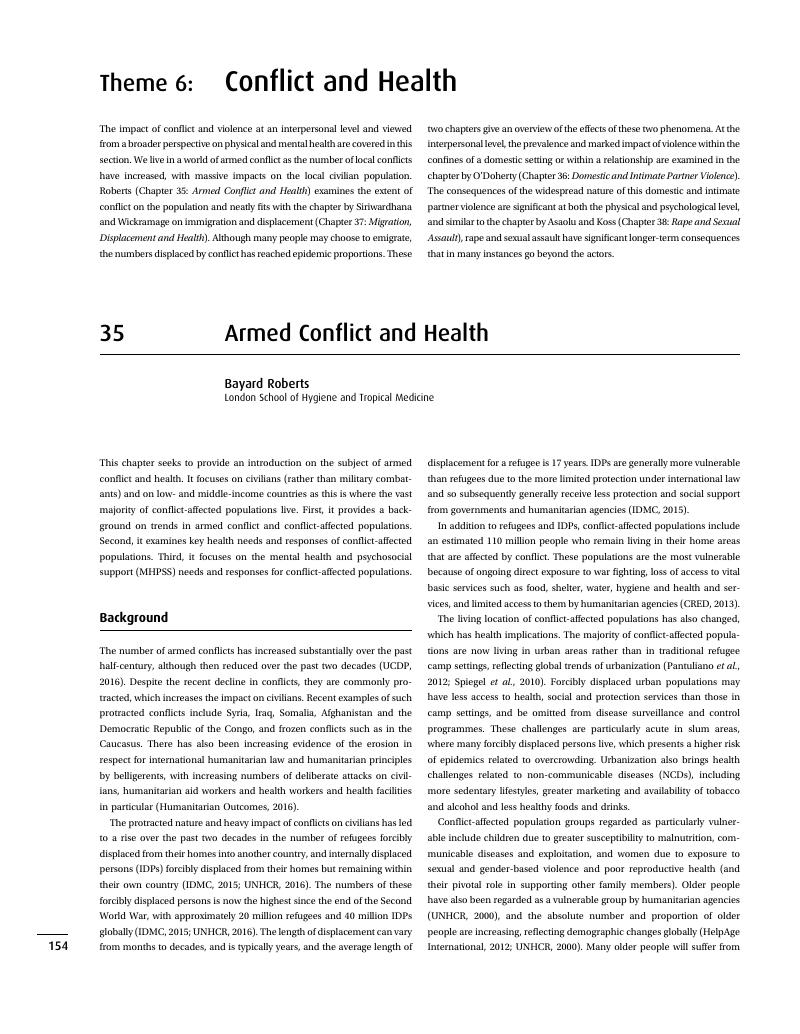35 - Armed Conflict and Health
from Theme 6: - Conflict and Health
Published online by Cambridge University Press: 05 June 2019
Summary

- Type
- Chapter
- Information
- Cambridge Handbook of Psychology, Health and Medicine , pp. 154 - 157Publisher: Cambridge University PressPrint publication year: 2019

